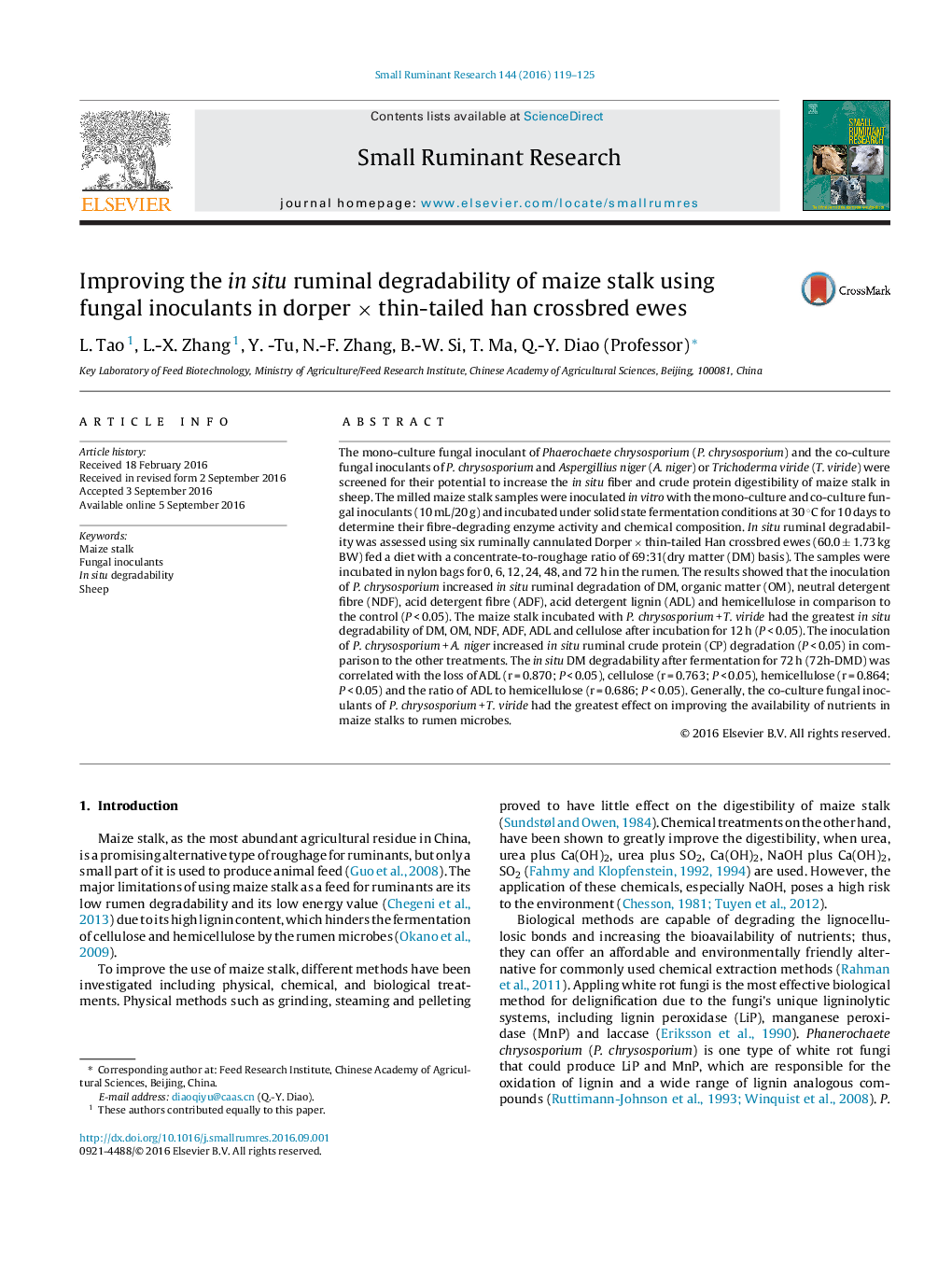| Article ID | Journal | Published Year | Pages | File Type |
|---|---|---|---|---|
| 5795293 | Small Ruminant Research | 2016 | 7 Pages |
â¢Improving the in situ nutrient degradability of maize stalk in sheep was investigated.â¢The mono-culture or co-culture fungal inoculants were used.â¢The co-culture fungal inoculants of P. chrysosporiumâ+ T. viride had the greatest effect.â¢The 72h-DMD was correlated with the ratio of ADL to hemicellulose.
The mono-culture fungal inoculant of Phaerochaete chrysosporium (P. chrysosporium) and the co-culture fungal inoculants of P. chrysosporium and Aspergillius niger (A. niger) or Trichoderma viride (T. viride) were screened for their potential to increase the in situ fiber and crude protein digestibility of maize stalk in sheep. The milled maize stalk samples were inoculated in vitro with the mono-culture and co-culture fungal inoculants (10 mL/20 g) and incubated under solid state fermentation conditions at 30 °C for 10 days to determine their fibre-degrading enzyme activity and chemical composition. In situ ruminal degradability was assessed using six ruminally cannulated Dorper Ã thin-tailed Han crossbred ewes (60.0 ± 1.73 kg BW) fed a diet with a concentrate-to-roughage ratio of 69:31(dry matter (DM) basis). The samples were incubated in nylon bags for 0, 6, 12, 24, 48, and 72 h in the rumen. The results showed that the inoculation of P. chrysosporium increased in situ ruminal degradation of DM, organic matter (OM), neutral detergent fibre (NDF), acid detergent fibre (ADF), acid detergent lignin (ADL) and hemicellulose in comparison to the control (P < 0.05). The maize stalk incubated with P. chrysosporium + T. viride had the greatest in situ degradability of DM, OM, NDF, ADF, ADL and cellulose after incubation for 12 h (P < 0.05). The inoculation of P. chrysosporium + A. niger increased in situ ruminal crude protein (CP) degradation (P < 0.05) in comparison to the other treatments. The in situ DM degradability after fermentation for 72 h (72h-DMD) was correlated with the loss of ADL (r = 0.870; P < 0.05), cellulose (r = 0.763; P < 0.05), hemicellulose (r = 0.864; P < 0.05) and the ratio of ADL to hemicellulose (r = 0.686; P < 0.05). Generally, the co-culture fungal inoculants of P. chrysosporium + T. viride had the greatest effect on improving the availability of nutrients in maize stalks to rumen microbes.
